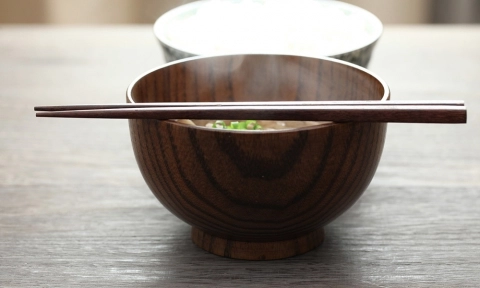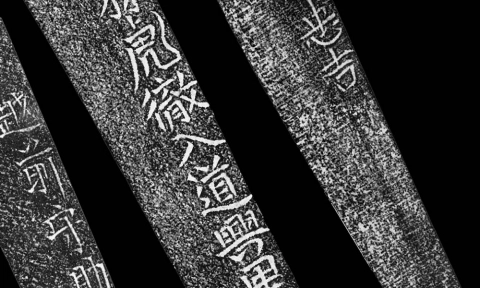Tsuka: How to tell if yours is good or bad
11 10, 2021

From shinken to iaito and decorative wall-hangers, there are numerous types of Japanese swords available for purchase today, however today we will have a look at the only part that you touch on a katana: the tsuka. We will also go over some simple ways to distinguish a good tsuka from a bad one.
Table of Contents
- 1.Is the Tsuka-ito wrapped firmly?
- 2.Make sure there is no difference in level between the tsuka-ito and the fuchi/kashira
- 3.Is the tsuka properly wrapped so that there is a front and a backside?
- 4.Make sure that the diamonds are uniform
- 5.Make sure that the tsuka-ito is wrapped alternately at the overlapping folds
- 6.Confirm that the direction of the menuki is correct
- 7.Summary
1.Is the Tsuka-ito wrapped firmly?
 A tsuka is wrapped with tsuka-ito, which can be made with fabric string or with leather strings. If the tsuka-ito moves and seems like it will come off only by touching it, you better watch be careful. The tsuka-ito should not be moving if you touch it or even try to push/pull it. Especially not if the sword is new, although with time the tsuka-ito might become slightly loose through wear and tear from use.
A tsuka is wrapped with tsuka-ito, which can be made with fabric string or with leather strings. If the tsuka-ito moves and seems like it will come off only by touching it, you better watch be careful. The tsuka-ito should not be moving if you touch it or even try to push/pull it. Especially not if the sword is new, although with time the tsuka-ito might become slightly loose through wear and tear from use.
If the tsuka-ito is not properly wrapped in the first place it might result in serious injury or accidents during keiko. So please make sure that the tsuka-ito is properly and firmly wrapped around the tsuka.

A properly wrapped tsuka is tight and won't budge easily.

A poorly wrapped tsuka will be loose and can be deformed with little effort.
2.Make sure there is no difference in level between the tsuka-ito and the fuchi/kashira
A properly wrapped tsuka will not have any level difference in-between the tsuka-ito and the fuchi/kashira. If there is a large bump caused by the tsuka-ito, it might mean that the tsuka-ito haven’t been properly stretched when it was wrapped onto the tsuka. Not only does it look bad, but it also affects the grip when you hold the tsuka. Which is why, if you see such a tsuka, it should be avoided.

On a properly wrapped tsuka, the tsuka-ito will be smoothly leveled against the fuchi/kashira.

This is a poorly wrapped tsuka, please note that the tsuka-ito is not flush against the fuchi/kashira.
3.Is the tsuka properly wrapped so that there is a front and a backside?
Katana have defined front and back sides, called “sashi-omote”(the “front side” when the sword is sheathed) and “sashi-ura” (the “back side” when the sword is sheathed). In the art of tsuka-maki (tsuka wrapping) there is a rule that says that the wrapping on the front-side must start with an “ichimonji”, meaning a straight line. Besides for certain koryu styles, such as the Yagyu-style tsuka, the front will definitely start with the tsuka-ito forming a straight line.

The front side of the sashi-omote (front side) of the tsuka starts off with wrapping the tsuka-ito in a straight line (ichimonji).
The closing knot works the same way, on the front it’s closed with a “omote-dome” knot, while the back is closed with a “ura-dome” knot. If the closing knot is reversed, and done on the wrong side of the tsuka, it signifies that the craftsman doesn’t have the appropriate skills for this job.

If properly made, the sashi-omote of the tsuka will also feature the omote-dome knot to close it off.

The sashi-ura will naturally have a ura-dome knot to close it off, please note that the knots used on the front side and the back side are distinctly different.
4.Make sure that the diamonds are uniform
When wrapping the tsuka, the tsuka-ito forms white “diamonds” showing the tsuka-same below. One of the basic rules of tsuka wrapping is that the diamonds need to be uniform, this is a sign of the skill of the craftsman who made it. If the shape and size of the diamonds are not uniform, not only does it look amateurishly made, but it also affects the feeling when you grip and use the sword, so please watch out for tsuka where the diamonds are not uniform.

A properly wrapped tsuka with uniformly formed diamonds along the whole length of the tsuka. Starting with an ichimonji and ending with a omote-dome knot.

This is also a nicely wrapped tsuka, however there is a fundamental problem on this tsuka. Can you see where it is? The closing knot on this tsuka is an ura-dome (back side knot), although the ichimonji at the start suggest that this is the sashi-omote side (front side) of the tsuka, making this a improper tsuka wrapping.

This is a poorly wrapped tsuka, as you can see, the diamonds are very deformed and not even close to uniform. You can also see that the hole for the mekugi is actually covered by the tsuka-ito. Although it's made according to the proper rules of tsuka-maki, the craftsman who made this most likely needs more practice.
5.Make sure that the tsuka-ito is wrapped alternately at the overlapping folds
The tsuka is wrapped with a single tsuka-ito, which is supposed to be wrapped while alternating the top and bottom tsuka-ito at each fold, meaning that if the first diamond fold is wrapped with the left tsuka-ito on top, on the next diamond fold it should be at the bottom. In some cases you might see tsuka that are wrapped in the way so that the same tsuka-ito is always on the top, but beware as this is an incorrectly wrapped tsuka. Please compare the pictures below to see the difference.

On a properly wrapped tsuka, the tsuka-ito will be wrapped while alternating the himo that is on the top and bottom at the intersecting folds of the diamond.

Please note how the tsuka-ito is wrapped while alternating the top and bottom tsuka-ito at each fold.

This tsuka is not only poorly wrapped, with the diamonds being in disarray, but the tsuka-ito was not wrapped while alternating the top and bottom tsuka-ito at each fold either, as you can see, the same tsuka-ito is always on top/bottom, which will cause the tsuka-ito to unravel very easily if it's cut.
The historical reason the tsuka-ito is folded alternatively at each diamond fold is to prevent the tsuka-ito from unraveling in the case you happened to receive the blade of your opponent with your tsuka, and the tsuka-ito was cut in the midst of a battle. This is a result of the careful considerations and wisdom of the craftsmen of feudal Japan, to allow the users of their swords to continue to battle even if the tsuka-ito was cut during battle. If the tsuka-ito is wrapped without alternating at the folds, the tsuka-ito will unravel easily and your life might be lost.
6.Confirm that the direction of the menuki is correct
Menuki have a proper direction and tenchi (top/bottom) which should be correctly mounted on the tsuka before it’s wrapped. Having the tenchi (top and the bottom part) of the menuki reversed is unthinkable and demosntrates a total lack of skill and understanding on the part of the craftsman. Although there are no specific rules, the craftsmen needs to take into consideration how the menuki will look when the sword it’s sheathed and hangs from the waist of the practitioner, having a menuki that looks like it has been reversed in this position will affect the appearance of the user.
There is a lot of different styles and types of menuki, so it’s hard to say that the following rules applies to all of them, but in general the following rules should be respected when mounting menuki.
For animal type menuki: The head or body (in case the animal is facing one direction, but the head is turned around to face the other direction) of the animal should be in the direction of the fuchigane.
For plant type menuki: The roots or the stem should be in the direction of the fuchigane.

This is a pair of meoto-dori menuki. The one on top is the "omote menuki" (front side menuki) and the one on the bottom is the "ura menuki" (back side menuki).

This is a pair of tora menuki, The one on top is the "omote menuki" (front side menuki) and the one on the bottom is the "ura menuki" (back side menuki). Please note the general direction of the body, even though the head of the tiger faces the opposite direction.

When the menuki is properly mounted, the head of the catfish on this tsuka faces the fuchigane.

When the menuki is properly mounted, the head of the catfish on this tsuka faces the fuchigane.

When the menuki is properly mounted, the stem of this flower menuki on this tsuka is in the direction the fuchigane.

When the menuki is properly mounted, the stem of this flower menuki on this tsuka is in the direction the fuchigane.

On this tsuka, the tenchi of this dragon menuki has been reversed, with the back of the dragon facing the blade side of the sword, in addition to facing the wrong way, in other words, the menuki that should be on the sashi-ura of the tsuka, has been mounted on the sashi-omote instead.

Although the tenchi of this dragon menuki is correct, this menuki should have been mounted on the sashi-omote side instead of the sashi-ura. Also note how the menuki is not properly mounted and centered on the this poorly wrapped tsuka.
This is the general rules for when mounting menuki. If the menuki is mounted in reverse, it’s called “nige-menuki” (a menuki that runs away), and this was very disliked by the samurai as it would imply that they would rather run away than battle to the death. Of course, for menuki that depict geometrical shapes or non-organic objects for example, these rules might not always apply.
7.Summary
In many ways, the tsuka is an important factor to the appearance of a sword. If the tsuka is not made properly it will result in a less dignified appearance of the user, and also practically hinder his progress as a martial artist. If you look out for the points above, you should be able to tell a good tsuka apart from a bad one to a certain extent. So please use this guide as a reference when you buy your next sword.
Having said this, no matter how good the tsuka has been wrapped, if you use it incorrectly, any effort on choosing a sword with a properly wrapped tsuka will be wasted.
Do not leave everything to your strength, you need to have a proper tenouchi when you grip your sword. This being said, the tsuka will also last longer, and when your tsuka becomes damaged or loosens even though you have used it the correct way, please do not continue using it and consider to ask to have it re-wrapped.
We craftsmen need to do our best to keep the users safe by making products that are safe to use. However I think that the user also has a responsibility to practice common sense, and should not continue to use something that has already been compromised in some way.












